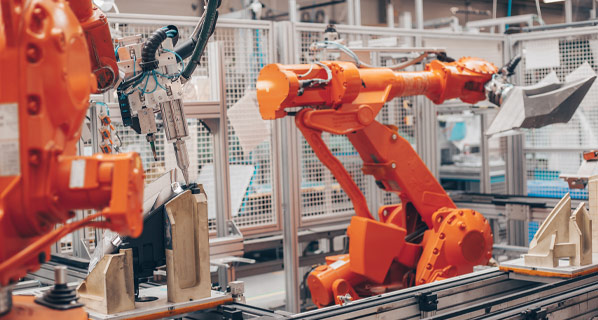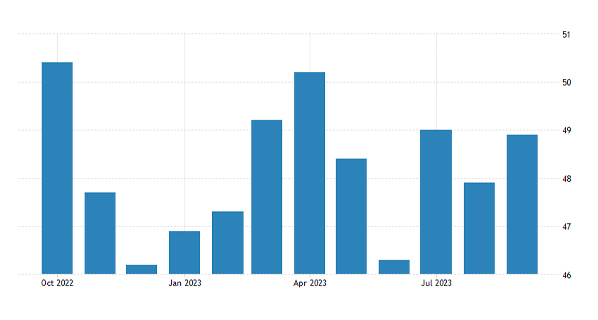Increasing Demand for Industrial Robots by Manufacturers to Boost Market Growth

Report by Market Research Future (MRFR).
According to the research report published by Market Research Future (MRFR), the Motion Control Market could thrive at a rate of 4.60 % between 2022 and 2030. The market size will be reaching around USD 18.92 Billion by the end of the year 2030.
Key Players
Prominent market players profiled in the global Motion Control market report include ABB Group, Siemens AG, Schneider Electric, STM Microelectronics Rockwell Automation Inc., Motion Control Corporation, MKS Instruments Inc., Emerson Electric Co., Parker Hannifin Corporation, AMETEK Advanced Motion Solution, and Estun Automation Co. Ltd.
Market Drivers
The motion control technology is the greatest enabler of robotic systems and other engineered products of all classes. Motion control makes robotics systems robotic and has spurred robotics innovations. In the manufacturing sector, robotic motion control improves production, enables the introduction of new technologies & applications, and allows new capabilities and entry into new markets.
Integrated motion technologies highlight the integration of multiple motion control components necessary for installing and miniaturizing high-power devices. Considering the present market scenario, the motion control market demand is expected to increase considerably over the next few years. The spurring rise in the industrial robots demand for manufacturing processes influences the motion control market revenues.
Restraints and Challenges
Robotics plays a major role in industrial automation, with which motion control is expected to garner even more prominence. Motion control would continue to take center stage driving industrial manufacturing in the future. The innate nature of motion controllers allows their integration into a wide area of manufacturing applications.
As a result, various industry verticals, including healthcare, and automotive & aerospace, foster the motion control drive market. Businesses worldwide have realized the importance of advanced automated manufacturing processes for future sustainability and staying at par with the competition, which is projected to offer significant opportunities to the market and technology providers.
Market Segmentation
The motion control system market is segmented into technology, components, application, industry, and regions. The technology segment is bifurcated into pneumatic, electromechanical actuation, and hydraulic.
The component segment is bifurcated into actuators & mechanical systems (linear actuators & mechanical systems, rotation & tilt actuators & mechanical systems, alignment actuators & mechanical systems, others), motion controllers, electric drives, AC motors, sensors & feedback devices, and others.
The application segment is further sub-segmented into inspection, material handling, packaging, robotics, and others. Based on industry, the motion control market is segmented into metals & machinery manufacturing, aerospace & defense, automotive, healthcare, oil & gas, semiconductor & electronics, and others.
Regional Analysis
Asia Pacific has always remained the leader and could remain a highly attractive market for motion control throughout the assessment period. Factors such as rising automation and rapid growth in manufacturing sectors across the region drive the motion control market growth.
Over recent years, automation in the manufacturing sector in the region has been increasing rapidly. With their manufacturing facilities being upgraded to international standards, China, Japan, and India create opportunities in the regional motion control market. Moreover, the availability of low-cost motion-controlled products from domestic manufacturers influences the motion-controller market in the region.
Europe accounts for the second-largest market for motion control technologies. Factors such as the rising uses of motion control systems in various burgeoning industries, including healthcare and automotive, drive the industrial motion control market. Additionally, strict regulations and considerable healthcare spending positively impact market growth. Besides, the escalating demand in the advanced motion controller market in the region fosters market growth considerably.
North America is a rapidly growing motion control market globally. The market growth in the region is led by growing R&D investments to enhance the technology. America’s advanced technologies have a greater impact on the global motion control market data and trends.
Also, the rise in aerospace & defense, oil & gas, and semiconductor & electronics sectors positively impacts the motion control drive market in the region. Furthermore, the significant industrial sector expansion and the presence of leading players in the region influence the advanced motion controller market growth.
Industry Updates
Manufacturing companies worldwide are increasingly considering automation & control technologies that can offset higher wages and increase efficiency. The recent rise in automation across the manufacturing sector has impacted the motion control market demand. The global motion control system industry is witnessing an increase in automation investments.
The market is expected to witness a favorable environment during the review period. The industrial sector is undergoing an immense transformation as it prepares for the future. The manufacturing industry is witnessing rising automation and increasing demand for human and machine safety, supporting the global motion control market growth.
Components supporting machine motion control, such as hardware, software, motion controllers, and sensors, are witnessing a rapid boom due to their benefits that allow manufacturers to reach desired performance levels. Resultantly, the motion control market is expected to witness an upward trajectory.
Despite the lucrative growth opportunities, the market still witnesses some headwinds, such as the lack of technical expertise and high-cost training requirements that restrict the market growth. Compatibility issues and high installation costs are expected to slow down the motion control market share. Also, changing trends in manufacturing techniques are projected to hinder the market’s growth during the forecast period.
There is a low entry barrier for new entrants due to the highly capital-intensive nature of the motion control system industry. However, the growing demand from end-users is expected to attract several new entrants with constantly upgrading technology.







